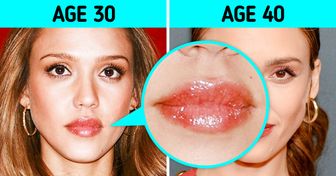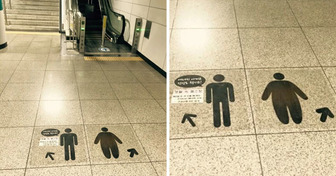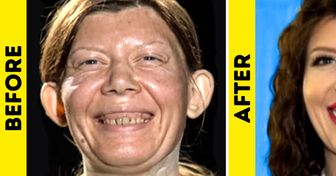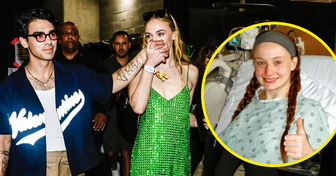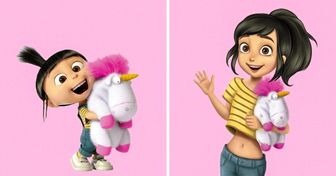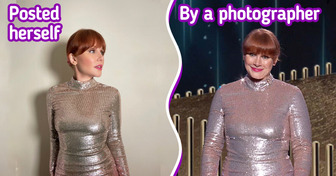20 Girls Who Just Cut Their Bangs but Look Like They Got a Plastic Surgery
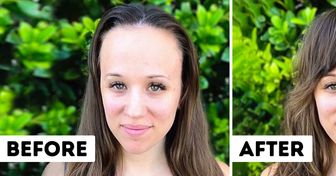
The art of hairdressing has been known since antiquity, and the people of Ancient Egypt knew how to cut hair and make lotions for it. Women’s intricate hairstyles appeared a few thousands of years ago, and some of them still excite the minds of modern fashionistas. Here are the most bizarre hairstyles of the past that might make you gasp in surprise.
In the 1920s, short haircuts became fashionable in women. Women readily cut their long hair short, but the bob, the hairstyle popular at that time, didn’t suit everyone. Therefore, some fashionistas chose to perm their hair.
The strands would be wrapped around metal rods that were attached to an intimidating-looking machine with wires. The rods would be heated, curling the hair. This procedure took a lot of time: sometimes ladies had to suffer sitting at the machine all day long. In addition, curling your hair this way was quite risky: often the rods were heated so much that they burned the scalp, and some curls simply fell off.
Permanent waves could be further accentuated with colored pigments added to the hair lotion.
In those days, neat hairstyles symbolized virtue and chastity, while loose hair were considered indecent. Therefore, ladies had to follow the rules and choose decent hairstyles. A striking example of this mindset was the intimate portrait of Queen Victoria that she presented to her husband, Prince Albert, in 1843. Apparently, the painting was not intended to be seen by outsiders because it depicts the queen with her hair loose and her shoulders bare.
In the 18th century, the hairstyles were fanciful and multi-layered. First, a wire frame was placed under the hair, which was wrapped in tulle, and then the most incredible compositions were created from the hair, often to commemorate a significant event, such as a scientific discovery or an incident at court.
The creation of such works of art was time-consuming, so ladies preferred to endure the inconvenience of sleeping in a sitting position or wearing a wire cage over their hair to protect it.
Noble European ladies of the late 16th century loved high, flamboyant hairstyles. Hair was curled and whipped, and special pads called “rats” were used to add volume to the hairstyle. These pads were rolled from natural hair and resembled rats in shape. A pad would be applied to the end of a strand, and then the hair would be wrapped around it. The resulting construction was fastened with ribbons or sewn with threads.
In Ancient Egypt, hairstyles were important. The heads of ancient Egyptian children were always zeroed with a lock left to grow on one side. Adults, both men and women, used hair irons and wore natural hair extensions and wigs.
The typical hairstyle of an ancient Egyptian woman was hair divided into 3 long equal parts that flowed on the 2 sides and the back. It was symbolic of the trio of gods. The style also implied the sincere wish that the gods would preserve the hair and increase it.
Italian ladies of the 16th century constructed their hairstyles from ribbons, braids and twisted strands. One of the hairstyles, the Italian plating, resembled a hoop crowning the head.
The hairstyles of that era informed everyone about a woman’s age, social and family status, and her financial well-being. Women, who had to work, tucked their hair under a turban. Noble ladies wore elaborate hairstyles decorated with jewelry. And women who wanted to emphasize their virtue covered their hair with a veil.
During the reign of Queen Victoria, elaborate hairstyles adorned with flowers and curls were replaced with modest and simple styles. Ladies made a straight parting in the middle and pulled their hair into an elegant bun. But some ladies found this style boring, so they tried to make at least the side locks interesting with the help of curls or flowers.
Legend has it that this hairstyle was invented by one of Louis XIV’s favorites. While hunting, she lost her hat, and her hair became disheveled. She then tied her hair into a ponytail with a lace ribbon, and accidentally introduced a new fashion. Originally, the fontange was a bundle of hair decorated with ribbons and lace, which was tied right above the forehead.
Over time, it was replaced by a tall wire construction, which was braided with hair, artificial curls, bows and frills. The fontange would constantly increase in size, and it was increasingly difficult for ladies to cope with this hairstyle because the construction was very unstable.
At the turn of the 19th and 20th centuries, ladies preferred to style their hair in a knot at the back of the head, but made their bangs curly which they curled with tongs. Some women had wavy curls, while others had bangs that looked like springs.
In the second half of the 18th century, women’s hairstyles became truly monumental. Using cushions or special molds of cork, hair and artificial strands, hairdressers created tall structures, often adorned with decorative objects.
The hairdos were so massive that some ladies found it difficult to walk through a doorway or climb into a carriage. Critics made jokes of this fashion, but ladies created these masterpieces of hairdressing art not only for the sake of beauty. With the help of various objects — ships, flowers, birds — a lady could express her attitude to this or that problem without saying anything out loud.
The traditional Da La Chi hairstyle, which often appears in historical movies, was invented specifically for Empress Cixi, who ruled in the 19th century. The metal construction used to create this style was known before that, but previously the hair was simply wrapped around this headdress. And in the 19th century, this headdress began to be decorated with black satin, flowers, tassels, and jewelry.
Valencia hosts the annual Fallas festival. For the festive procession, women wear 18th century-style outfits and create elaborate hairstyles on their heads, reminiscent of Princess Leia from the iconic Star Wars.
The hair is divided into 3 parts which are twisted into complex buns above the ears and at the back of the head and pinned with precious combs, which are usually inherited.
Some of the fashion details of the past can be found in today’s trends, but hopefully we won’t have to repeat these hairstyles ever.

